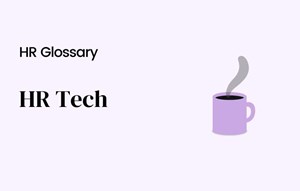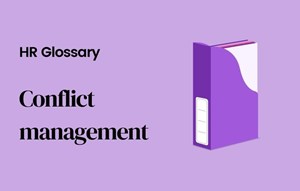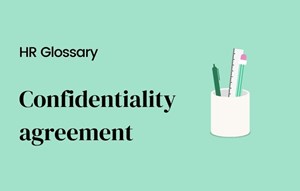Offboarding

[Sommaire]
What is offboarding?
Offboarding is the series of steps involved in the formal separation of an employee and company. It follows a resignation, redundancy or retirement or other form of employment termination.
From the perspective of the employee lifecycle, it’s the opposite of onboarding. Similar to onboarding, conducting a formal procedure will help reduce complexity, ensure there are no loose ends, and even ensure a positive employee experience to enhance your employee brand.
Offboarding is important for both employers and employees, as it can help with legal implications, ensure the records are up to date for tax purposes, and help protect the company’s reputation.
Why is offboarding important?
The employee offboarding process is important for a range of reasons. It makes administration easier and ensures everyone is aware of the formal steps involved. It also reduces security risks and helps transition work to other employees. However, perhaps the most important reason for a smooth and well-planned process is related to your employee engagement, experience, and subsequent employee brand.
If you can ensure employees leave you feeling as positive about your company, then this will enhance your employee brand. They’ll be more likely to recommend you as an employer to people in their network. They may even return as boomerang employees.
In contrast, a poor employee offboarding will leave employees feeling unappreciated and uninspired. This can even create risks for confidential information that both the employee holds. Despite having signed a confidentiality agreement, unhappy ex-employees may risk sharing that information if they feel aggrieved. One study found that as many as 20% of security breaches came through ex-employees.
The main steps involved in a good strategy would include:
Confirming the resignation, redundancy, retirement or termination in writing
A resignation letter, email or on the employees company portal will provide a clear written record.
- Asking the employee to sign a termination form while offboarding by offering an official termination or separation letter signed by both parties can help confirm dates worked and any legal implications that may be relevant after the fact.
- If necessary, providing a reference for your ex-employee to offer a positive connection can benefit your employee working for another organization. Delivering a positive reference can also help to avoid any legal complications; however, you are under no obligation to do this to respect in the same time the process flowchart.
Agreeing the leaving date
If your employee has a core team, then allowing as much notice as possible can be helpful. The former employer can deliver this in writing, help with confirmation, avoid any confusion if dates change, and give them the chance to say goodbye to co-workers and clients, which could be a nice gesture toward the exiting employee.
Scheduling the last payment date
While departing employees, you can tie up all administrative loose ends by offering any further support if required, such as canceling any services or products your company assets provide. As an employee's supervisor, ensuring all outstanding money has been paid where relevant in the offboarding process, for example, each final pay information, their final salary payment, holiday pay, etc.
Transitioning work across to the employee’s replacement
Offering any relevant training if required, including any unfinished work over to the employee’s replacement or other core team members, can help with continuity in the final days/weeks.
Providing this in writing will offer evidence of the offboarding process and avoid any confusion over responsibilities by your talent management system, ownership, or work that should be done.
Announcing the employee’s departure date
Offering an internal announcement that can be stored in the company’s knowledge base and referred back to for future employees. This may also help avoid any confidentiality issues or other legal implications on your departing employee process, especially if your ex-employee still has access to internal systems. A public statement offered may also be appropriate depending on the circumstances of their departure.
In general, it is recommended that the employee offboarding process takes place in a separate online portal to ensure confidentiality and limit access to institutional knowledge and any other information. Offering this in writing and tying up all loose ends ensures no issues related to the company property arise after the fact.
Conducting an exit interview
One of the essential things in your employee offboarding checklist, while a departing employee is tying up documentation by offering an exit interview, will help awareness of any changes needed for policy manuals, procedures, etc. Giving an exit survey in writing can also clarify requirements or expectations that you may have at the end of the departing process.
Giving a final farewell
Offering a final lunch or dinner and treating your former employees to the office facilities for their last day is a nice gesture that can also be helpful and assure your employee satisfaction.
The offboard employees should have an opportunity to say goodbye, and as HR professionals, your support can be a good way to ensure a smooth transition. Delivering the required training and support with transitioning work can help maintain morale with your current team and ensure a successful handover and knowledge transfer.
Collecting equipment and close accounts and access
Ensuring all personal tools have been removed in the offboarding process: an employee has handed in their pass card and any other passwords needed to access systems and accounts. Recover company assets would usually include client portals and files etc. A termination employee offboarding checklist of tasks can be helpful if this is not all clear.
Company systems should follow legislation, but it should be tailored for your business needs - particularly if an employee moves due to disciplinary action or is leaving for another company. It would help if you considered your employee knowledge, relationships and circumstances to ensure you take the right steps for each individual. This is especially true if the leaving date conflicts with an important project, increasing risk levels.
The employee offboarding process can be considered part of a wider digital workplace strategy, taking steps to safeguard the security and productivity tools before employees leave. A positive departing employee experience is also a key consideration when staff turnover is high in your business. Relevant HR policy might include a loyalty bonus to retain former employees and potential boomerang employees.
How to implement an offboarding process in a company?
By agreeing on a formal offboarding process, you’ll ensure that former employees who leave your organization have a similar experience. You might want to create a series of processes that reflect why an employee leaves your company. For instance, employees who are leaving to progress their career should be approached very differently from employees who have had their employment contract terminated or who have been made redundant.
Using offboarding software can make the process easier to manage because of the way it will prompt you to follow certain steps and indicate other factors that you need to consider. Of course, an offboarding process can be successfully implemented without HR software by following these steps:
Preparation
Once the former employee has handed in their notice, the manager must notify the correct people and formalize notice acceptance. The employee should be given an offboarding checklist to work through and the employee’s worklist should be reviewed to identify work that can be completed prior to departure and work that must be handed over.
You must agree on the departure date, agree on untaken leave, and then schedule the final payroll system for that employee considering remaining leave or other outstanding benefits due to the departing employee.
Departure
At the point of departure, the employee is ready to leave, but the role of the HR department is only just beginning! This stage involves an exit interview, collection of all technology, passes, uniforms, vehicles, and so on.
Systems access to emails and company credit cards should be stopped and the employee should be removed from the organizational chart website and other literature.
Post departure
With the employee now departed, you can stay in touch with them via an alumni scheme, pension communication, and even shareholder information. You should provide a referral letter and encourage that person to stay in touch via referrals.
Based on your institutional knowledge, offboarding practices should follow legislation but need to be personalized for your business needs - this includes taking into account an employee's circumstances and relationships. In addition, it is also a key consideration when staff turnover is high in your business, where relevant HR policy might include an end-of-contract bonus.
Offboarding can be a long process and should ensure you cover all aspects of the employee’s relationship with the company, including the knowledge transfer, positive elements such as their last day, typically a party, or some other kind of celebration.
Organizing each departing employee by software will help you to complete these tasks efficiently and in a structured manner. An HR software and an exit interview will prompt you to prepare for the departure and carry out the various tasks throughout the employee offboarding process, ensuring nothing is missed and that all HR procedures are correctly followed.
Employee offboarding makes it easy to capture relevant information systems access and documents and then transmit this to third parties such as future employers or government agencies requiring confirmation of an individual leaving the company.
By using HR software, an employee offboarding checklist can also help you build a library of all training manuals and procedures so that knowledge is not lost when an employee leaves. It makes departing less formal, more efficient, and easier to manage to ensure your HR team will have a better experience and integrate your new employee fluidly.


